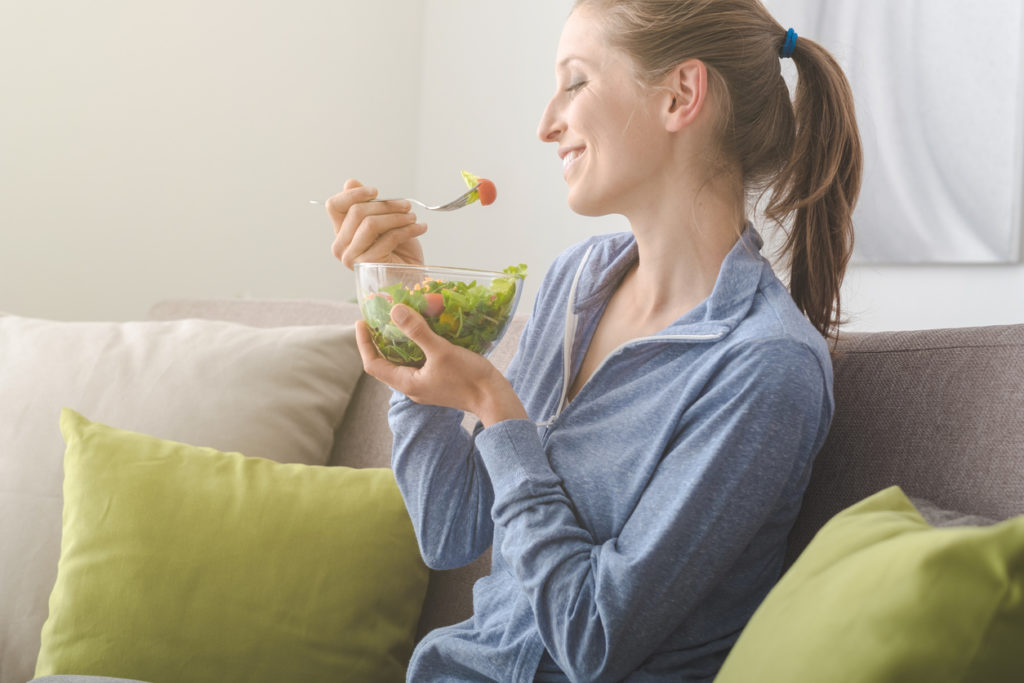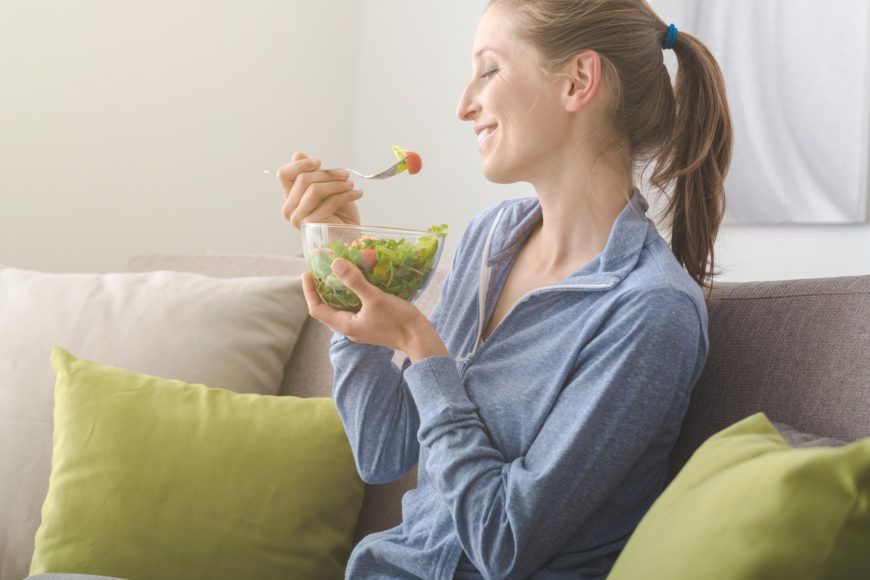
After reading Mindful Eating: Part I a couple of weeks ago, you’ve learned a little bit about what mindful eating actually is, you’ve read about the vitamins, nutrients and healthy aspects of your produce, and you’ve even taken a trip to a local farm to see where and how your produce was grown! Now it’s time to put mindful eating into practice.
While on the Gerson Therapy, preparation of food and juices will likely be done by either you or a loved one. No more going to restaurants and having strangers prepare food for you. It won’t take but a few days on the Gerson Therapy to develop an appreciation for just how much work must be done. This hard work should be embraced each and every mealtime. Meal time is the perfect time to reflect on how purposeful the preparation of the meals and juices are; each meal gets you a little closer to your healing goal.
Remember the broccoli’s story that we followed in Mindful Eating: Part I? From the time of the first planting of this broccoli to the time just before the broccoli is to be eaten, it has gone through its own journey of being cared for and nourished with everything it needs. Now you are sitting down for your meal. When you sit down for meal time, who do you have sitting with you? The process of mindful eating begins before the first bite or first sip has even taken place. It begins as you recall everything that has led to this meal. Everything you eat will have a similar but unique story, and recalling it, even just the impression of it, will add to the meal’s enjoyment and appreciation.
You don’t have to literally remind yourself that broccoli contains the 3 glucosinolate phytonutrients: Glucoraphanin, gluconasturtian, and glucobrassicin, and that these three have a very strong impact on the body’s detoxification system (read more on page 58 of the Gerson Therapy Cookbook). Having read this even once will give you a certain positive impression that is brought up anytime before you eat broccoli… if you only pause for a moment. The same goes for picturing where the broccoli came from, and the work that went into preparing it. Pausing for a moment will bring this appreciation into greater clarity, and will also allow the body to rest and begin to relax in order to promote easier digestion and optimal absorption.
Eating Time
Be sure to take a good look at your food before you eat it; notice what colors are present, and what kinds of smells there may be, too. When you begin to eat, make sure to chew with your entire mouth. Move the food around to parts of your mouth that you may not be used to chewing with, and you may be surprised by the type of sensation it creates. This will help wake up not only taste receptors within the mouth, but will also help encourage the smell of the food to rise up behind your palate and into your nasal passage from the back. Humans have somewhere between 350 and 400 types of odor receptors in the nasal cavity, and it’s these odor receptors that are a large part of how the flavor of the food is experienced.1
If you chew and swallow too quickly, not only is the food less broken down upon entering your digestive system, but you’ll miss out on experiencing the food’s full flavor. Maybe early on in the therapy that’s a good thing; perhaps this allows you to eat something like Brussel sprouts, but as you progress and your taste buds start to adjust, you’ll be amazed at the flavors that are unlocked from high quality produce cooked slowly, and eaten slowly.
As you come to the end of your meal, note to yourself how it made you feel. Are you feeling full, energized and nourished. Or maybe a little sleepy? There are many factors that contribute to how you’re feeling after a Gerson meal, but I suspect it won’t take long for you to realize that you’re regularly feeling much better than how you used to feel after meals, even compared to some of your favorite meals. With time, you may even find that the way you feel after each meal is directly related to what you think about before and during your meal. If you don’t feel like you’re getting exactly what you need from this meal, then your next meal is the perfect opportunity for more practice. Just continue to pay attention, and before you know it you’ll be calling Brussel sprouts your favorite food!
Want to develop a positive, healing relationship with food?
Check out our NEW Gerson Kitchen Digital Bundle!!
Over 2 hours of online Gerson cooking and juicing tutorials PLUS the Gerson Therapy Cookbook E-book!
Join our Email List and
Follow Along on Facebook, Instagram and Twitter!
References
1Owen, David. (2015 November, 13). Retrieved August 4, 2016 from National Geographic’s website: http://ngm.nationalgeographic.com/2015/12/food-science-of-taste-text
Written by: Eric Freeman | Eric Freeman is the Head Chef at the Gerson Institute, co-author of the Gerson Therapy Cookbook and host of the upcoming online Gerson Kitchen Series.
Post by: Nicole Ferrer


